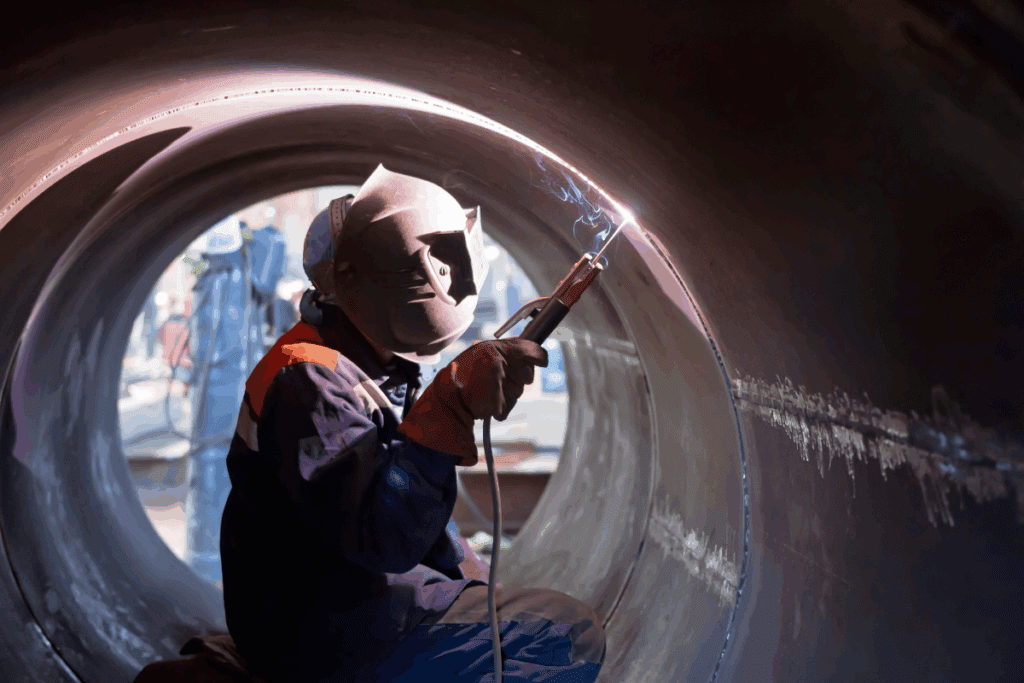How to Stay Compliant with Canadian Welding Standards in 2026? Welding Code Changes Are Coming!
NOTE: ASME is related to Pressure envelopes: Pressure Vessels, Boilers, Steam, Nuclear, [Pipelines (ASME and CSA Z662 are often self-referential in Canada)].
ASME does not apply codes for Structural welding. Structural welding and pipelines (and related facilities) are a CSA jurisdiction in Canada.
Staying up to date with Canadian welding standards is important as codes and regulations continue to evolve.
With the upcoming changes to ASME codes and standards set to take effect in January 2026, there’s a six-month window for teams to review and adjust.
At Qualimet, we understand that keeping up with these updates can feel overwhelming, which is why we’re here to support you through every step.
Staying compliant can make a significant difference, not just for project success but also for inspections down the road.
Our welding consulting and engineering expertise can help guide you through the changes and make the transition smoother.

Why Compliance Matters More Than Ever
Compliance is about more than just meeting expectations.
It’s about safety, accountability, and the peace of mind that comes with knowing your projects are on track.
As project requirements evolve, working across different jurisdictions may bring new considerations and expectations into play.
Staying ahead of changes could help avoid costly delays, shutdowns, or rework down the line.
With audits and reviews becoming more common, especially in regulated industries, having the right support in place can make a world of difference.
Don’s Comments:
Standards provide a framework for consistent practices, ensuring that welding processes produce reliable and high-quality results. This is vital for maintaining the integrity of welded components.
Adherence to standards helps protect workers by outlining safe work practices for welding procedures and directed requirements for project activities. It also ensures public safety by managing the integrity of critical infrastructure projects like bridges, buildings, pressure vessels and pipelines.
Canada, and many other countries, have regulations that mandate compliance with specific welding standards to ensure public safety and environmental protection. Compliance with these standards is required to conduct business, especially in sectors like oil and gas, pressure equipment manufacturing, building construction, and industrial maintenance.
Welding codes play a pivotal role in mitigating failures and ensuring the longevity of constructed projects. Inspections and audits verify compliance with these codes, which is essential for the reliability of welded materials.
What’s Changing in 2025?
The landscape of welding standards is shifting, and 2025 marks a key year for updates that could impact your projects. As industry evolves, so do the codes and regulations that govern safety, quality, and compliance across all phases of welding work.
Here’s what you need to know about the changes on the horizon and how they could influence your project timelines, budgets, and overall workflow:
Upcoming ASME Updates (July 2025)
In July 2025, new ASME codes and standards will be introduced, bringing important updates that could influence your current processes and requirements.
These updates are set to become the current codes and standards in January 2026, offering a window for teams to adjust before compliance is required.
- Section III – Nuclear Facility Components: Introduction of Division 5 for high-temperature reactors.
- Section VIII – Pressure Vessels: Revision of ratcheting stress limits (single limit of cold yield plus hot yield).
- Section XIII – Overpressure Protection: New rules for overpressure protection of pressurized equipment, including boilers and pressure vessels.
- Code Case Books: Publication of new Code Case Books with approved exceptions and alternatives to standard construction requirements.
These updates aim to improve safety, efficiency, and compliance across various industries.
Transition Period (July 2025-January 2026)
The transition period between July 2025 and January 2026 provides a six-month window to review and implement changes.
This time could be vital for teams to ensure they are prepared for the new requirements and minimize disruptions when the new standards take effect.
Projects Under Current or Updated Codes
Working under existing codes or adjusting to the new ones requires understanding the differences between the current and updated standards.
Keeping track of these changes could help your project stay aligned with the required regulations without missing a beat.
Cross-Referencing Documentation
During this transition period, it may be necessary to cross-reference documentation to ensure your project complies with both current and upcoming standards.
This step could help identify any gaps early, allowing your team to address them before the new codes take effect.
Potential Shifts and What Needs Attention
Changes in the welding standards may bring attention to areas that need adjustment, such as material specifications or testing procedures.
Staying proactive during this transition period could reduce the likelihood of needing revisions later on, saving time and resources in the long run.
Key Documents That May Be Reviewed During Audits
When it comes to audits, certain key documents are essential in confirming that your welding processes and personnel meet the required standards.
These documents provide a detailed record of procedures, qualifications, and performance, all of which could be reviewed to ensure compliance during the audit process.
Having these records readily available can help minimize disruptions and keep your project on track.
WPS (Welding Procedure Specifications)
WPS outlines the specific parameters and techniques used for welding a particular material or joint.
During an audit, this document may be reviewed to make sure that the welding procedures align with the applicable codes and standards, confirming that the work meets the required specifications.
PQR (Procedure Qualification Records)
PQR is a record of tests performed to qualify welding procedures.
Auditors may review this document to verify that the welding procedures used during production are based on qualified tests that meet the necessary criteria for strength and durability.
WPQ (Welder Performance Qualification)
WPQ is a record of an individual welder’s qualifications and abilities.
During audits, this document may be checked to confirm that the welder has been trained and tested in accordance with the required standards, ensuring that only qualified personnel perform the work.
Getting Ready for a Welding Audit or Code Review
Preparing for a welding audit or code review involves more than just having the right paperwork in place.
It may include a thorough review of documents, checks on processes, and possibly even field verification.
Being proactive with internal audits can help identify gaps before they become bigger issues.
Cross-functional planning, involving engineering, QA, and field teams, could bring valuable insights to the table.
Many teams use the six-month lead time to build a roadmap that aligns with their priorities and capacity.
This forward-thinking approach can help teams stay on track and avoid last-minute scrambling.
By identifying potential challenges early, your team can stay agile and make adjustments before they impact the project timeline.
Stay Compliant with Qualimet at Your Side
With the evolving landscape of welding standards, having the right support can make all the difference. At Qualimet, we understand the challenges of staying compliant, and we’re here to help you navigate the updates and adjustments that come your way.
Our team works alongside you to offer reliable guidance and support, so you can stay ahead of the changes and keep your projects running smoothly.
You can count on us to provide welding and engineering consulting that will help your team feel prepared and confident. Ready to make compliance a seamless part of your process?
Reach out to Qualimet today and discover how we can join your success!
